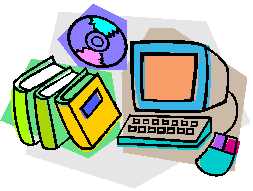 ◄Home
Works cited►
◄Home
Works cited►
The role technology...
Technology can be used in education to provide tools for:
The following are some examples of how technology can be used in these areas:
Accessing and communicating information and ideas
Online Resources (Internet and local intranets):
The Internet has revolutionized the way we access and share information. Through the internet we can search for answers, take virtual tours of remote locations, communicate with people, share ideas and information, and participate in online courses. Digital libraries are also available in many schools providing electronic access to articles, journals, encyclopedias, and other reference materials.
Video and Satellite Conferencing
Videoconferencing over ISDN phone lines, Internet, and Internet2 offers face-to-face interactive communication, allowing students to communicate and collaborate with students in other parts of the worlds (McLester, 2001, p28).
Satellite dishes are also used to access broadcasted seminars and to provide interaction with people remotely. I had the opportunity to participate in a classroom that communicated with astronauts on the Russian Mir Space Station using a ham radio connected to a satellite dish on the school rooftop.
Stimulating higher level thinking
Simulation Programs
These programs which are available on disks or through the Internet, allow students to experience real-life simulations that build problem solving skills and information gathering while working towards a collective goal. Examples are the "Oregon Trail" and "Where in the World is Carmen San Diego" series.
Interactive Problem Solving Programs
Interactive problem solving programs are also available on disks and on the Internet. Unlike the simulation programs, these are often modular groupings of exercises that allow students to progress to higher levels with more complex problems based upon performance. Website examples can be found at http://arcytech.org/java/ and http://www.explorelearning.com/.
Graphing Calculators
Graphing calculators offer students a handheld, visual model of mathematics problems. Immediately seeing the graphical affect of changing a plus sign to a minus sign or adding an exponent or a coefficient to a variable helps students to have a better grasp of more complex mathematic concepts.
Facilitating management processes
Class Management Software
There are a number of software packages available to teachers to assist with class management activities such as creating exams, grading papers, tracking student progress, recording assignments, and producing feedback to students and parents.
Handheld Computing or PDAs
PDA (personal digital assistant) devices can be used by both teachers and students to keep track of their schedules, assignments, and contacts. (For additional uses of PDA devices in the classroom see http://www.k12handhelds.com/101list).